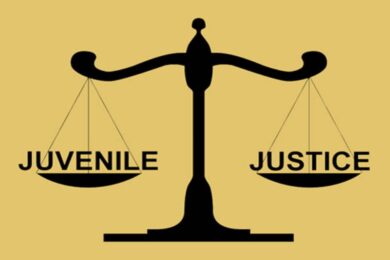
Introduction
The criminal justice system in India is a cornerstone of the democratic framework, designed to uphold the rule of law, protect individual liberties, and maintain social order. It involves a comprehensive mechanism comprising laws, procedures, institutions, and personnel that are responsible for detecting, prosecuting, adjudicating, and punishing criminal behavior.
However, despite its constitutional importance and legal robustness, India’s criminal justice system faces several pressing issues such as delays in trials, overcrowded prisons, lack of police accountability, and outdated laws. This blog explores the structure, functioning, and key challenges of the criminal justice system in India and discusses ongoing and suggested reforms.
1. Components of the Criminal Justice System
India’s criminal justice system primarily consists of the following five major components:
a. The Police
The first point of contact in criminal cases.
Responsible for investigation, prevention of crimes, maintaining public order, and arresting accused persons.
Governed primarily by the Indian Police Act, 1861 and state-specific police laws.
b. Prosecution
Legal professionals (public prosecutors) represent the state and present evidence against the accused in court.
Governed by Code of Criminal Procedure (CrPC), 1973, and various judicial pronouncements.
c. Judiciary
Criminal courts include Sessions Courts, Magistrate Courts, and the High Court or Supreme Court in appeals.
Responsible for adjudicating criminal cases impartially based on evidence and arguments.
d. Prisons
Managed by state governments under the Prisons Act, 1894.
Serve to detain undertrials and convicts.
Focus on punishment, deterrence, and, ideally, reform.
e. Legal Aid and Rehabilitation
Includes National Legal Services Authority (NALSA) and state bodies to provide free legal aid.
Rehabilitation services aim to reintegrate offenders back into society.
2. Legal Framework Governing Criminal Law
India’s criminal justice system is governed by three core legislations:
Indian Penal Code (IPC), 1860: Defines offenses and prescribes punishments.
Code of Criminal Procedure (CrPC), 1973: Outlines procedures for investigation, arrest, bail, trial, and appeal.
Indian Evidence Act, 1872: Details rules for admissibility and evaluation of evidence.
3. The Criminal Justice Process
Step 1: Registration of FIR
First Information Report (FIR) under Section 154 CrPC is filed by the police.
FIR sets the criminal law in motion.
Step 2: Investigation
Police gather evidence, interrogate suspects, make arrests.
The process culminates in a charge sheet or closure report.
Step 3: Trial
Conducted in a court having jurisdiction.
Includes examination of witnesses, presentation of evidence, cross-examination, and legal arguments.
Step 4: Judgment and Sentencing
Judge delivers verdict based on facts and law.
If found guilty, the accused is sentenced — which may range from a fine or imprisonment to the death penalty (in rarest of rare cases).
Step 5: Appeal
Parties can appeal to higher courts if dissatisfied with the judgment.
The appellate process includes the District Court, High Court, and Supreme Court.
4. Key Issues and Challenges
a. Pendency and Delay in Trials
Over 4 crore cases are pending across Indian courts.
Causes include insufficient judicial manpower, procedural complexities, and frequent adjournments.
b. Undertrial Population
About 75% of inmates in Indian jails are undertrials, many of whom are poor and illiterate.
This undermines the principle of “innocent until proven guilty.”
c. Police Reforms
Issues: Political interference, custodial torture, lack of training, and poor investigation quality.
The Supreme Court’s 2006 directives in the Prakash Singh case have seen limited implementation.
d. Prison Conditions
Overcrowded, understaffed, and unhygienic.
Lack of focus on rehabilitation or reintegration programs.
e. Inequitable Access to Justice
Poor and marginalized sections often lack effective legal representation.
Legal aid infrastructure is under-resourced.
f. Forensic and Technological Backlog
India faces a severe shortage of forensic labs and skilled experts.
This delays investigations and weakens evidence collection.
5. Judicial Interpretation and Landmark Judgments
Indian judiciary has played a significant role in interpreting criminal law to safeguard human rights:
Maneka Gandhi v. Union of India (1978): Expanded the scope of Article 21 (Right to Life).
D.K. Basu v. State of West Bengal (1997): Laid down detailed guidelines to prevent custodial torture.
Selvi v. State of Karnataka (2010): Prohibited the use of narco-analysis, brain mapping without consent.
Hussainara Khatoon v. State of Bihar (1979): Highlighted plight of undertrial prisoners and emphasized speedy trial as a fundamental right.
6. Recent and Proposed Reforms
a. Revamping Criminal Laws
In 2023, the Indian government introduced three new bills to replace IPC, CrPC, and the Evidence Act:
Bharatiya Nyaya Sanhita (BNS) – replacing IPC
Bharatiya Nagarik Suraksha Sanhita (BNSS) – replacing CrPC
Bharatiya Sakshya Adhiniyam (BSA) – replacing Evidence Act
These aim to:
Reduce colonial legacy in law
Increase victim-centric and technology-based approaches
Decriminalize certain offenses
b. Fast Track Courts and Special Courts
Set up to deal with specific categories like rape, corruption, and POCSO cases.
Mixed results due to overburdening and lack of personnel.
c. Police Modernization
Funds provided under the Modernization of Police Forces (MPF) scheme.
Emphasis on digitization, surveillance, and training.
d. Alternative Dispute Resolution and Restorative Justice
Initiatives like Lok Adalats, plea bargaining, and mediation aim to reduce court burden and foster amicable resolutions.
7. The Way Forward
To make the criminal justice system efficient, just, and inclusive, India must:
Ensure time-bound trials and prevent procedural misuse.
Implement police reforms in letter and spirit.
Strengthen forensic infrastructure and adopt modern investigation techniques.
Improve prison conditions and promote rehabilitation.
Enhance access to legal aid, particularly for vulnerable populations.
Embrace victim-centric approaches and uphold human dignity at every stage of justice.
Conclusion
India’s criminal justice system stands at a critical juncture. While it has withstood the test of time, its colonial foundations and systemic inefficiencies demand urgent reform. A truly effective justice system must deliver swift, fair, and accessible outcomes, protect the rights of the accused and victims alike, and maintain public trust in the rule of law. With the right blend of policy reforms, judicial activism, and administrative will, the system can evolve to meet the aspirations of a modern constitutional democracy.








No Comments